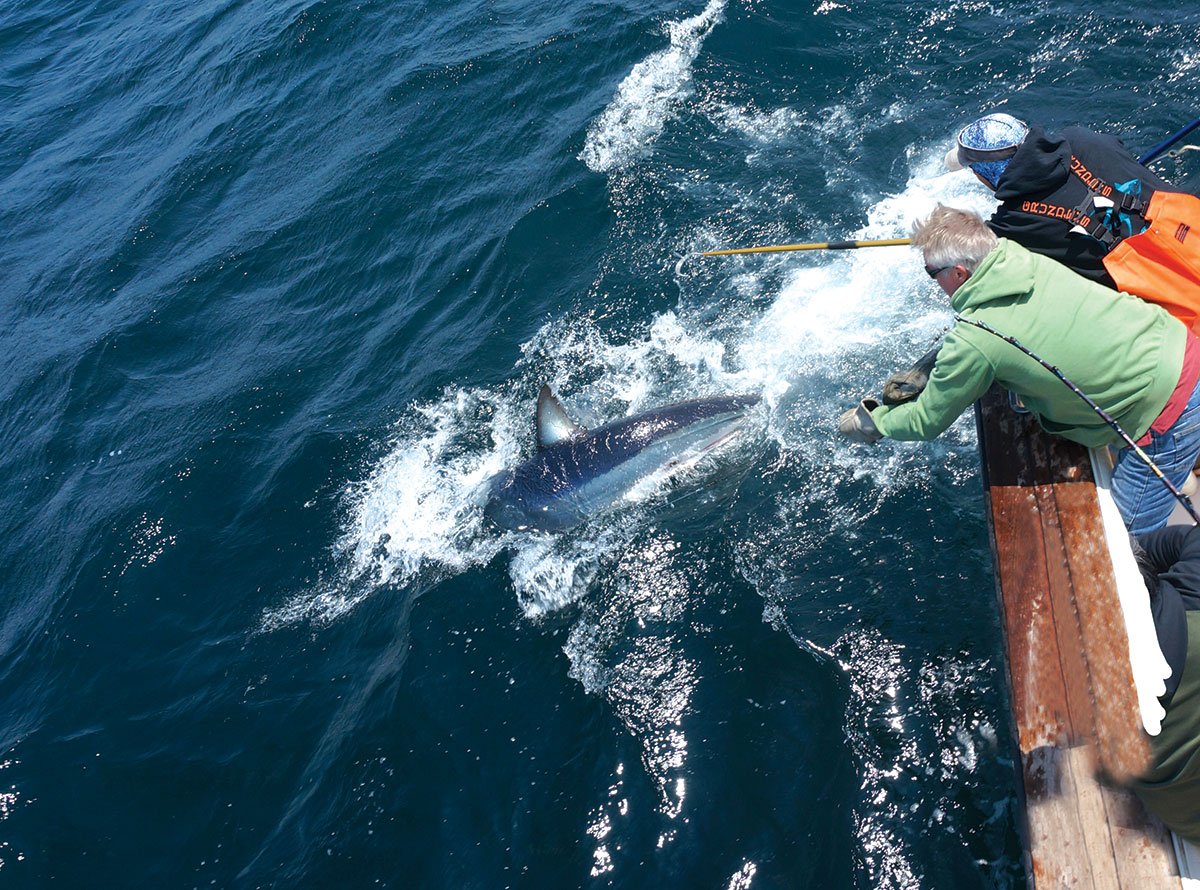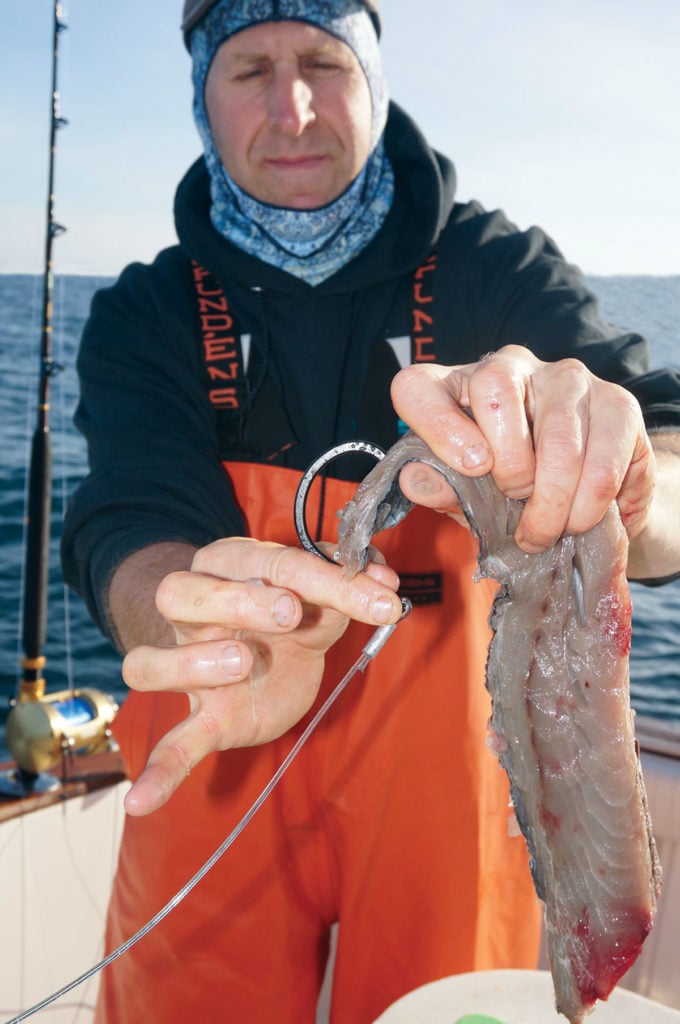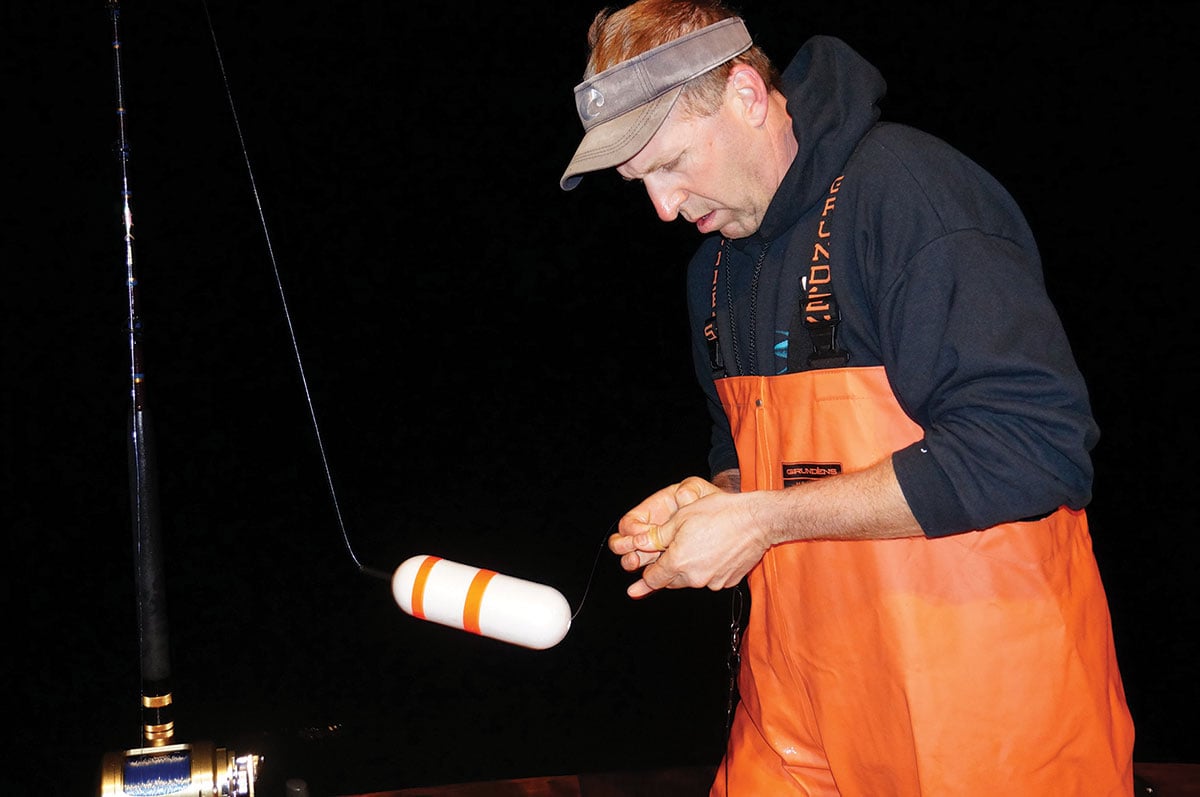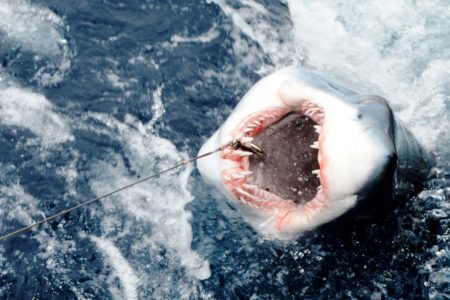
Shark season is fast approaching and with it will come a host of tournaments for those who like to pit their skills against fellow anglers. Most tournaments have dramatically reduced the number of sharks killed by raising minimum weights and limiting the types of sharks that qualify for prizes. Whether you tournament fish or not, the tips you’ll find in this article are given to help make you a better shark fisherman. Sharks are a precious resource so be selective when it comes to harvesting these pelagic predators. Practice catch and release whenever possible, and getting involved in a tagging program can help NOAA better manage the fishery for the future.
Leaders
There are as many ways to skin a cat as there are to construct shark leaders. Most captains have a tried and true method that they rely on for their personal application. No one is ultimately superior to any other. Learn and perfect a system that works best for your boat, crew and expectations. My system changed greatly every season for a number of years until I was comfortable. I still tweak it from time to time as materials evolve. If your system employs multi strand cable leader always use plastic coated. The plastic coating protects the shark from any file-like sawing action that can occur during the fight. Cable can cut into fins and may injure a shark that is intended for release. It can also protect your boat and fishing gear. There is nothing worse than an angler reeling the cable into the center on an international and scoring a filed grove into the reel. I use a cable wind on that is connected to weighted barrel swivel by a loop to loop connection. I then haywire twist a 5-foot section of single strand wire that has a large circle hook also connected with haywire twist. I make sure my twists are always 100 percent and leave nothing up to chance. I highly recommend a tool made by Skurge of the Sea. The cone on the tip ensures that each strand of wire is twisted perfectly over one another at the correct angle. I used to use my thumb and pliers and did a pretty decent job. But why chance it? Simply put it’s the right tool for the job.
Location, Location, Location
To be successful on a consistent basis you have to increase the probability of finding your intended prey. This means finding a spot that has the greatest potential. It should be “fishy,” and show signs of life. Look for baitfish, birds, and oily surface slicks. Under water structure; wrecks, fingers or rock piles are paramount. Structure offers protection and a hiding place for smaller baitfish to live. Consider this the shark’s kitchen. They might not spend the entire day there, but they will come in for a snack or a meal. This is where you want to present your offerings. Water temperature should be considered another form of structure. Temperature breaks can form a barrier that nutrient-rich water and baitfish will congregate on. Early in the season look for warmer water, latter look for cooler water. Try fishing on both sides of the break. Water clarity and color are also major factors to be considered. Ideal conditions are blue clear water. Dirty green water is like a smoke filled room for humans. It’s not comfortable and hard for pelagic fish to breath. Keep in mind, you can and will catch sharks in suboptimal conditions, however you want to strive for the best combination of conditions to increase the probability of a shark showing up and staying in your slick.
Chumming & Chunking
To save time prior to arriving at your spot try to determine which direction your drift will be. The easiest way to do this is to observe other boats that are already set up. Look at where their balloons are in relation to the boat. In your mind set a vector and notice how it relates to your compass. To determine the best location to start your drift find the starting point that will allow you to spend the most time over the most potentially productive water (structure). When you arrive at this spot throw a bucket of chum over to see how it will affect the drift. Note your rudder or outboard engine position. After 5-10 minutes of rigging baits and preparing to start fishing go back to your plotter and check your track line. If all still looks good throw your baits over and start fishing. However, you may find you need to adjust your position for the optimal drift. Pull in the chum bag and head towards your spot.

Power chumming gives your slick a kick start. Use a hardy chum system like a milk crate or plastic chum bucket and secure it to the boat. Pass your intended spot in the exact opposite direction of your drift. Cruise 4 to 8 knots back to your spot with your chum bag deployed. Stop the boat and start setting up your baits. The deepest bait goes out first suspended from a balloon; it will be placed furthest from the boat. The middle bait is next. The third bait can be positioned straight down 30 to 50 feet and closest to the boat. This bait doesn’t require a balloon and can be quickly reeled in and re-pitched to anything you spot in your slick. All reels should have their clickers on, and your drags should be set as light as possible. If you would like to add live bait it is easier to manage it by keeping it the closest bait to the boat. This bait should also be suspended from a balloon. Oftentimes the resistance of the balloon is enough to keep the bait swimming back and forth in the slick without pulling drag out and moving it further from the boat. In the third position it is easier to keep the live bait from tangling the other baits. The noise and vibrations it produces can also lead a fish through your slick where it may find a fillet bait first. It is much easier to hook a fish with a fillet as opposed to a whole live offering. This being said, if the live bait gets hit or if you see a shark close to the boat you should deploy a pitch bait and try to sneak the live one out.
Baits need to be staggered and should always be in the slick. You may need to add or delete weight to accomplish this. It will all depend on the boat’s drift speed. Use a wind sock or bucket to slow your drift down if necessary. Another trick is to move your chum bag to the bow of the boat to change the direction of the flow, or add a second one to widen it. Keep a watchful eye on your slick. Oftentimes baitfish such as bluefish, mahi mahi, mackerel and tuna can be spotted. Have an appropriate outfit ready so that you can catch this fresh bait. Also pay attention to the balloons. Sharks often pick up a deep bait furthest from the boat and continue to swim up the slick towards the boat. Any balloon that moves toward the boat or out of the drift should be cranked in fast since you may have a shark on that line.
Power Drifting
On days when there is not enough wind you may need to use the motors to cover the necessary ground. Your fillet baits should have rubber skirts over them to keep them from washing out. Start by drifting to see which direction the boat wants to go. Kick your motor(s) in and out of gear and try to stay on that line. Nudge the boat ahead a little and then drift, repeating this over and over. Your baits will rise and fall, and you will cover your intended structure. If you notice wind or current pick up, stop and drift. Check your track line and determine if you should reposition.
Trolling
When there is no wind or current you may need to switch to trolling. When trolling it is a good idea to only use two rods, saving the third as a pitch bait rod. Trolling baits should be skirted to prevent wash out. Butterfly or whole mackerel are ideal because they track well and are hardy. Whole squid or any belly bait folded and stitched together are great options too. There are several shark lures that can be purchased pre-rigged with cable. Lures that enable you to add a strip bait to them are best. When you either spot a shark or get a hit and miss, no hook up, stop the boat and see if you can entice a strike on one of the sinking baits. Give it a few minutes and then try power drifting. If that doesn’t generate a strike, check the baits and go back to trolling.
Conservation
The National Marine Fisheries service offers (free of charge) a tagging kit that includes tags, cards and a dart needle. You can find all the necessary information at http://nefsc.noaa.gov/nefsc/Narragansett/sharks/tagging.html.
Solo makes a simple tag attachment that connects to their brush handle that turns it into a tag stick (one less pole on board). Simply insert the dart end of the tag into the notch and secure the tag with a small rubber band or electrical tape. When tagging a shark be patient and wait for a good shot. There is no reason to potentially injure any fish that you intend on tagging and releasing. Stick the fish in the upper mid-section behind the dorsal fin. The shark may decide to take another run, so let it. Prior to tagging, lighten up a little on the drag, and if you are using a wireman get him ready to drop his wraps. At this point, if the hook pulls or the leader parts you still have a good tag and release. Have the angler bring the fish alongside again. If you haven’t already done so, estimate the length and identify the sex. After a few boatside pictures it’s time to snip the leader as close to the hook as safely possible. Take the card that corresponds to the deployed tag and note the basic information; species, sex, and length. I have the angler stick the card in their pocket. We fill out the remaining information after we get the lines back out.

Keep only what you can use. Outside of tournaments we release almost every shark we catch. We might keep one in June and another in October, depending on what’s in the freezer.
When fishing in tournaments stay current on rules regarding minimum weight and leader board statistics, only keep qualifying fish. Using length charts to help predict weights is an easy way to determine if you should keep or release a shark. With current federal regulations allowing one fish per boat per day you really need to know what’s going on in your tournament. If you are fishing in a multiple day tournament and the smallest mako (3rd place) is 300 pounds, and no threshers have been weighed, you would want to release all makos estimated under 250 pounds and save your slot in hopes of hooking a thresher. If the category is wide open a qualifying fish can put you on the board and in contention.
Shark identification is also important. Not only is it embarrassing for the captain and crew to weigh a fish with a mistaken identity, it can be costly. In the Northeast a greater number of great white sharks have been showing up. Juvenile great whites have been brought to the scales in some tournaments by crews that thought they had a mako shark. This can not only cost you potential tournament winnings, but there may be a hefty fine involved as well. A quality shark identification chart should be on board. A good chart has several specific characteristics of each shark including teeth. Shark teeth are very pronounced and can make proper identification easy.
Remember sharks are slow to reproduce and their stocks need a break. Do your part to be a conservationist. Don’t be part of the problem, be part of the solution. Boatside photos and tag and release are great ways to get into the action without negatively affecting the population.




